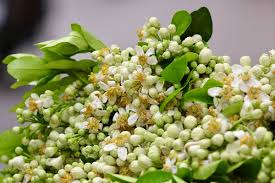How to select Plantain Cultivars for High Yields
For field cultivation, medium plantains should be preferred to giant ones even though giant plantains produce heavier bunches.
Giant plantains take longer to produce and are more likely to be damaged by strong winds because of their size.
The decision whether to grow a French or a False Horn plantain cultivar should depend on which type the consumers prefer.
Horn plantains should never be cultivated as their yield is very low.
Selecting Plantain Cultivars
Cultivars, short for “cultivated varieties”, are plants that are propagated without seed, but rather vegetative (for example, via stem cuttings).
To select the most appropriate plantain cultivar, the following factors should be considered:
- The size of plant — the amount of leaves produced before flowering
- The type of bunch produced
- Customer preference should be considered.
Conventional Planting Materials
Peeper: a small sucker emerging from the soil.
Bits: pieces of a chopped corm.
Maiden sucker: a large sucker with foliage leaves or a large pseudostem which does not produce fruit.
Sword suckers: have a narrow base, short pseudostem and narrow, blade-like or lanceolated leaves. They produce healthy, fruitful pseudostems when they mature. IT is the best conventional planting material
Water suckers: have short pseudostems and broad leaves.
Water suckers are not strongly attached to the rhizome and generally produce weaker plants and less fruit. Hence, maidenheads and large sword suckers are preferred over water suckers.
Read Also: The Recommended Time and Method of Planting Plantain Suckers
Sources of Plantain Planting Materials
*An existing plantain farm, most preferably an old field with healthy suckers.
*A multiplication plot whose sole aim is for sucker production and not for plantain.
*A tissue culture laboratory/micro-propagated plants — for producing healthy, improved, pest and disease free in-vitro plants.
The underlining statement is that planting materials should be obtained from healthy sources. In a situation where the true status of the suckers are unknown, planting materials should first be treated to remove or kill pests in the corm and roots.
Getting the Plantain Suckers

Knowing fully well that a plantain plant is a type of herb not grown from seeds, they are propagated through suckers. Suckers are shoots that grow from a bud at the base of the plant) or from corms (underground bulbs known as rhizomes). They may be considered as baby plants that are used to start new plantain plants.
Choose suckers from plants that are vigorous. They should have small, spear shaped leaves and are about four feet high, especially the sword sucker.
There is a corm at the bottom of each mature plantain tree. In transplanting a sucker, it is necessary to cut downwards and get as much corm and root as possible. Plant these and cut or decapitate the sucker to facilitate good evaporation.
Keep around two to five meters between planted suckers. In the early days of your plant, keep them moist but not too wet as they don’t have leaves yet to evaporate the water.
Read Also: Things to Consider when Selecting a Site for Plantain Farming Business
Preparing the Plantain Suckers
Sucker preparation (peeling) is carried out in the field where the planting material is collected. This is to avoid contamination of the new field with roots infested with nematodes or corms with stem borers. Prepared corms are transported to their destination where they are left to dry for a few days (not in the sun).
Suckers are separated from their mother plant with a spade or machete. The sucker corm must not be damaged or chipped. Consequently the corm should be carefully peeled with a machete. The pseudo stem of the suckers should be cut off a few centimeters above the corm.
Peeling of the corm delays the development of nematode infestation, while cutting of the pseudo stem reduces bulkiness and improves early growth of the newly planted sucker. The peeling process is just like that for cassava.
A freshly peeled healthy corm ought to look white, but corms infected by stem borers and nematodes show brown and black spots which have to be removed until only white tissue remains.
If the infestation is severe, with many brown and black spots, the sucker should be destroyed. Suckers have to be planted within two weeks. Storage of suckers for more than 2 weeks will adversely affect future yields.
Now that you know how to go about selecting the appropriate cultivar of plantain sucker, why not share it with your friends who might also need it?
Read Also: Anatomy of Fishes: Female Fish and their Reproductive Strategies
Do you have any question, suggestion or other contributions? kindly use the comment box provided below for all your contributions. You are also encouraged to please kindly share this article with others you feel can benefit from this information if found useful enough as we may not be able to reach everyone at the same time. Thank you so much for sharing!








